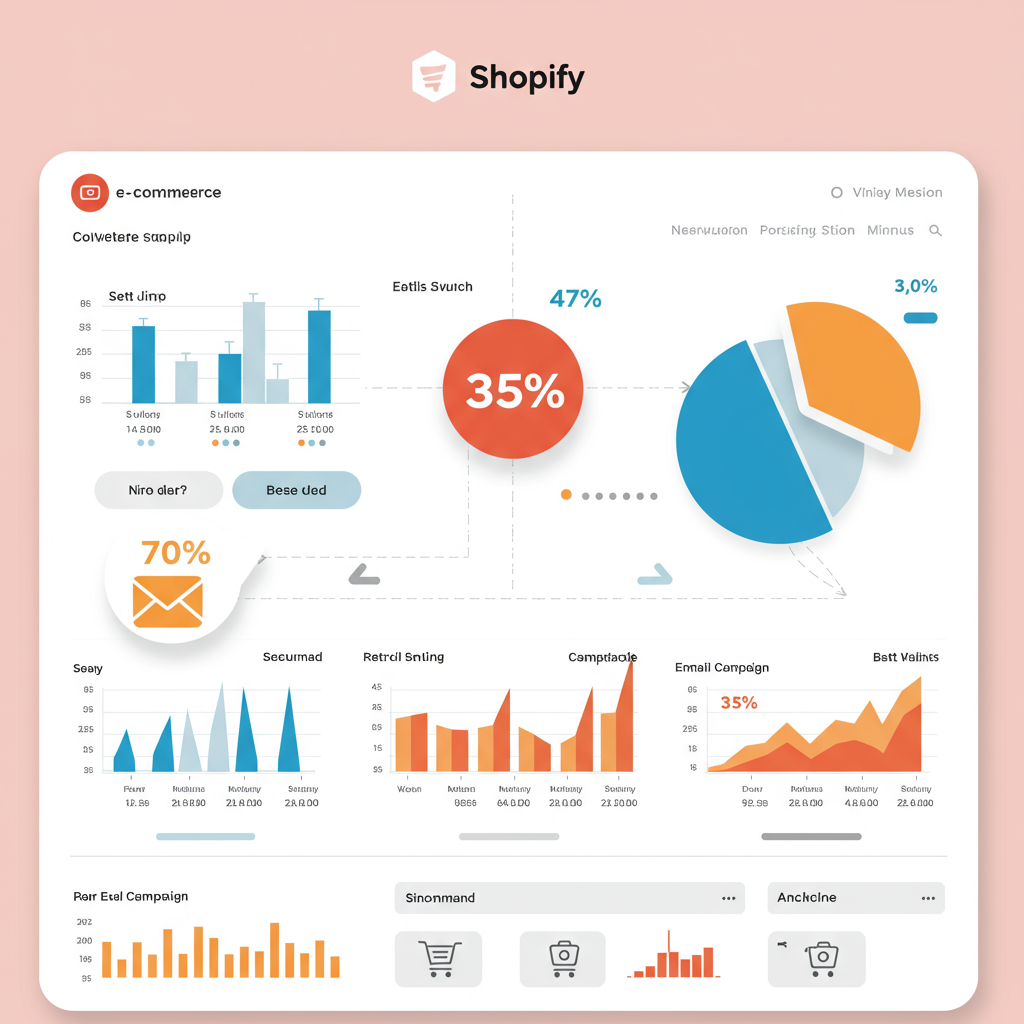Unlock the full potential of your e-commerce store by deeply integrating Klaviyo for personalized customer journeys and increased sales.
As a merchant, I’m always looking for ways to deepen my connection with customers and drive more sales.
One tool that has truly revolutionized my e-commerce strategy, especially with Shopify, is Klaviyo.
If you’re running a Shopify store, you’ve likely heard the buzz around email marketing, and Klaviyo stands out as a powerhouse in this arena.
It’s not just about sending emails; it’s about sending the *right* emails to the *right* people at the *right* time.
Today, I want to walk you through how I’ve leveraged Klaviyo with my Shopify store to build stronger customer relationships and boost my bottom line.
Before we dive into the “how,” let’s quickly touch on the “why.” Shopify gives us an incredible platform to sell, but Klaviyo takes our customer communication to the next level.
It’s built specifically for e-commerce, meaning it understands customer behavior in a way general email marketing platforms simply can’t.
The deep integration with Shopify allows Klaviyo to pull in all sorts of valuable data – purchase history, browsing behavior, abandoned carts, and more.
This rich data is the foundation for highly personalized and effective marketing campaigns.
Getting started is surprisingly straightforward. My first step was to connect my Shopify store to Klaviyo.
You’ll find this option usually under “Integrations” within your Klaviyo account. It’s a simple click-and-authorize process.
Once connected, Klaviyo immediately begins syncing historical data from your Shopify store, which is incredibly powerful for immediate segmentation.
I also made sure to install the Klaviyo onsite JavaScript snippet on my Shopify theme. This snippet is crucial for tracking website activity, like viewed products and abandoned carts, in real-time.
Don’t forget to enable the “Viewed Product” metric in your Klaviyo settings; it’s essential for browse abandonment flows.
My next focus was on growing my email list. Klaviyo’s built-in sign-up forms and pop-ups are fantastic for this.
I designed a welcome pop-up offering a small discount for new subscribers, which has been incredibly effective.
These forms seamlessly integrate with your Shopify store and automatically feed new subscribers directly into your Klaviyo lists.
I also recommend setting up an exit-intent pop-up to capture those who might be leaving your site without purchasing.
This is where Klaviyo truly shines for me: automated flows. These are sequences of emails triggered by specific customer actions.
**Abandoned Cart Flow:** This is a non-negotiable. I set up a series of 2-3 emails to remind customers about items left in their cart. This flow alone has recovered a significant amount of lost revenue for my store.
**Welcome Series:** For new subscribers, I have a welcome flow that introduces my brand, shares my story, and highlights popular products. It’s about building a relationship, not just selling.
**Post-Purchase Flow:** After a customer makes a purchase, I send a series of emails. This includes order confirmation (though Shopify handles this, I use Klaviyo for more branded versions), shipping updates, product care tips, and a request for a review.
**Browse Abandonment Flow:** If someone views a product but doesn’t add it to their cart, I send a gentle reminder. This is where that “Viewed Product” metric comes in handy.
**Win-back Flow:** For customers who haven’t purchased in a while, I trigger a win-back flow with special offers to re-engage them.
With all that data flowing in from Shopify, I can create highly specific customer segments.
Instead of blasting everyone with the same email, I segment my audience based on purchase history, products viewed, average order value, and even location.
For example, I might send an email about new arrivals in a specific product category only to customers who have previously purchased from that category.
This level of personalization makes my marketing feel less like spam and more like a helpful recommendation.
Beyond automated flows, I use Klaviyo for my regular email campaigns – new product announcements, sales, holiday promotions.
I always A/B test my subject lines, email content, and even send times to see what resonates best with my audience.
Klaviyo’s analytics make it easy to see what’s working and what’s not, allowing me to continuously optimize my strategy.
Klaviyo provides incredible insights into my customer behavior and campaign performance. I regularly check my dashboards.
I look at open rates, click-through rates, conversion rates, and revenue generated from my emails.
This data helps me understand my customers better and refine my marketing efforts. It’s not just about sending emails; it’s about understanding the impact.
**Start Simple:** Don’t try to implement every flow at once. Begin with the abandoned cart and welcome series, then expand.
**Personalize Everything:** Use dynamic content to include customer names, product recommendations, and order details.
**Test, Test, Test:** Always A/B test your emails and flows to optimize performance.
**Don’t Be Afraid to Experiment:** Try different offers, subject lines, and content types.
**Clean Your Lists:** Regularly remove unengaged subscribers to maintain good deliverability.
Integrating Klaviyo with my Shopify store has been one of the most impactful decisions I’ve made for my business.
It’s transformed my email marketing from a generic broadcast into a highly personalized, revenue-generating machine.
If you’re a Shopify merchant looking to truly connect with your customers and unlock the full potential of your email marketing, I wholeheartedly recommend diving into Klaviyo.
It takes time to set up and optimize, but the return on investment is undeniable.
What do you think about this article? Have you used Klaviyo with Shopify, and what are your favorite features or tips?






